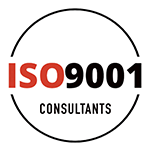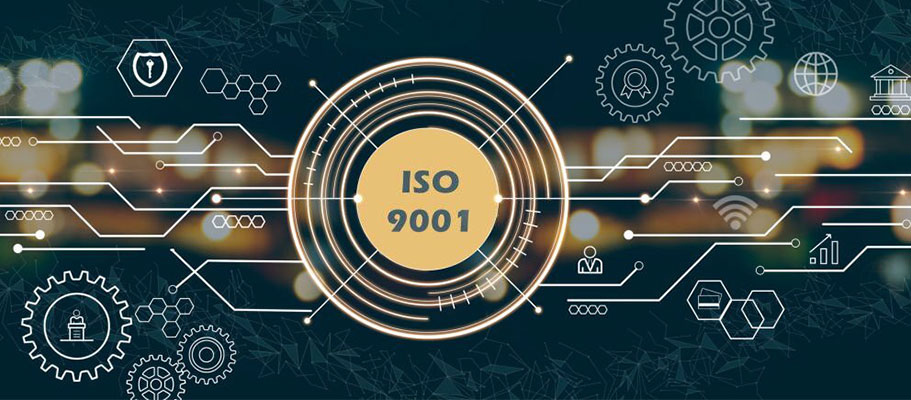The International Organization for Standardization (ISO) is responsible for establishing international standards that enhance the way things are done. These international standards provide societal, technological and economic benefits.
They are aimed at specifying the technical requirements in order to standardise products and services, leading to smooth international trade. By adopting the international standards, organisations can reassure their consumers that their products are efficient, safe to use and not harmful to the environment. However, as there are a variety of ISO standards, it is helpful to know the difference between them. In this article, we will discuss the difference between ISO 9001 and ISO 9002.

What is ISO 9000?
Both the ISO 9001 and ISO 9002 are a part of the ISO 9000 family. The ISO 9000 family of standards focus on quality management, aiming to develop an internationally acceptable baseline for performances. Quality management can be described as the method of overseeing all of the processes that are used to achieve and maintain the desired level of excellence in product or service creation and delivery.
This includes the creation of a definite quality policy, implementing robust quality planning and establishing quality control. This process is also referred to as total quality management (TQM). Essentially, the ISO 9000 family focuses on explaining the vocabulary and concepts used in the implementation of a Quality Management System (QMS).
What is ISO 9001?
ISO 9001 is a standard that outlines the requirements for a quality management system that works to enhance customer satisfaction. The standard was last updated in 2015, indicating a process-focused framework for organisations to develop their processes and achieve organisational success.
The ISO 9001: 2015 quality standard contains seven basic components, namely, customer focus, engagement of people, evidence-based decision-making, leadership, relationship management, continual improvement, and process approach. Leaders are urged to demonstrate responsibility towards improving the commitment of the workforce, focusing more on customers, implementing the quality policy, conducting effective planning and ensuring the appropriate delegation of responsibilities.
For more information on how to get ISO 9001, you can refer to ISO 9001 preparation page. On this page, all the points necessary to obtain ISO 9001 are described.

The intention of the ISO 9001: 2015 was to facilitate international trade by providing a standard that is globally recognised and accepted. It is a standard that is applicable in all areas of work within an organisation. Irrespective of the sector, manufacturing, commercial and service organisations can achieve many benefits from the implementation of a QMS.
Quality management provides organisations with a framework that shows that their products and services satisfy the customer’s quality requirements and meet the terms of all regulatory obligations. By adhering to the recommendations in ISO 9001, risk reduction takes place, and growth opportunities are recognised.
At the same time, this certification gives international recognition to the organisation. The implementation of the QMS provides many benefits, including improving process control, enhancing reliability, enhancing documentation, creating greater awareness of quality objectives in the workforce and a better understanding of customer requirements. If you are interested in this field, read more on the ISO 9001 internal audit page, we have prepared comprehensive information for you.

The standard can be utilised by any organisation, regardless of its products, services, constitution or size. The standard is helpful to demonstrate performance to customer requirements and achieve consistency in quality management. The ISO 9001 is used to determine whether an organisation’s systems are under control and appropriately documented. Additionally, another prime focus of the standard is to ensure that auditable systems are in place to measure the output of processes. The ISO 9001 documentation page contains very complete information about the standards required to obtain ISO 9001.
Acquiring the ISO 9001 certification can reap many benefits for an organisation, including improving their chances of winning contracts, enhancing customer satisfaction, reducing product or service problems, creating better management, increasing consistency in business practices, enhancing employee satisfaction, and lowering costs and streamlining business processes.
By improving the participation of employees, creating better internal communication, and achieving greater consistency in quality, a culture of improvement is embedded within the organisation.
What is ISO 9002?
The ISO 9002 was revised in 1994 and was titled the model for quality assurance introduction, installation and servicing. However, it has covered almost all concepts of ISO 9001 but does not include the creation of new products.
Therefore, the guidelines provided in this standard were directly related to contracts to manufacture. In the year 2000, ISO 9001, ISO 9002 and ISO 9003 were combined and revised to create ISO 9001: 2000. The next revision took place in 2008 and, consequently, in 2015. As most organisations adopted ISO 9001: 2015, the ISO 9002 standard became obsolete.

What is the difference between ISO 9001 and ISO 9002?
There are several significant differences between the two standards, including:
- The number of updates: The ISO 9001 standard is the most updated version of the international standard in comparison to ISO 9002, which was last updated in 1994.
- The purpose: The major difference between ISO 9001 and ISO 9002 is that the former provides a framework for quality management in the design, development, production and installation of products and services, while ISO 9002 focuses only on production, installation and servicing.
- Specifications: Earlier, ISO 9002 used to be the same as ISO 9001, but without the design requirements. Nowadays, all organisations can use ISO 9001 and exclude those sections that do not apply to them, for example, design and development.
- Sector: The ISO 9001 sets out the requirements for an organisation where the business processes can include design and development, production, installation and servicing. In contrast, ISO 9002 is appropriate for organisations where the design and development of a product are not a concern.
How can get iso 9001?
You can count on our help to get ISO 9001. ISO 9001 consulting helps you to get your certificate easily, quickly and easily. With years of experience and expertise, we can do all the work related to ISO 9001. For more information, you can call 61280056444.








Users Comments
Get a
Quote